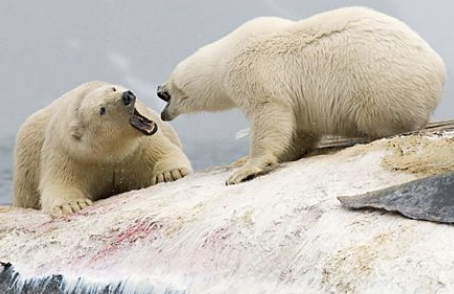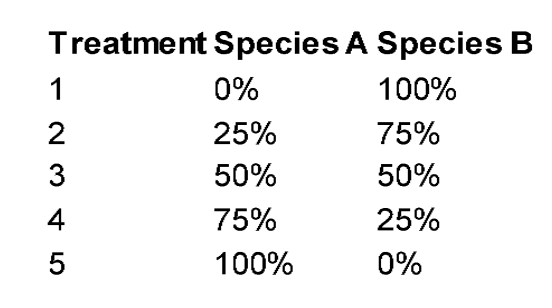Ecology slides - (Lecture 10)
1/18
There's no tags or description
Looks like no tags are added yet.
Name | Mastery | Learn | Test | Matching | Spaced |
|---|
No study sessions yet.
19 Terms
Competition
Competition occurs when individuals (of the same or different species) share the use of a resource that limits the growth, survival, or reproduction of each
LIMITED RESOURCE*
Intraspecific - = between members of a single species
Interspecific - = between members of different species
Is Negative - Negative (-/-)
There may be a “winner,” but in reality both lose or give up something (ex. energy, time) as a result of the need to compete
Competition generates a negative effect on the organism relative to the organism on its own (i.e., if it had unlimited access) even if it “wins”
Exploitation competition
Organisms compete through the consumption of a limited resource (food, space, breeding grounds)
An INDIRECT form of competition
One organism's use of the resource reduces its availability for others
Ex: Pollinator A takes pollen, reducing the supply for Pollinator B
Interference competition
Individuals interact DIRECTLY with one another (fighting, aggression) to obtain a limited resource

Big picture lab hypothesis
Species interactions affect the growth of plants, either positively or negatively
Null hypothesis
We can make the counter-claim that interactions cause no effects on growth
We cannot prove or disprove the null hypothesis absolutely, but we can decide to discard it if it is not significantly supported by our results, and then we can accept an alternative hypothesis
“Species interactions have no effect on growth.”
That is, no differences exist. This does NOT mean that no interactions occur; it just means that the effects within and between species cannot be distinguished.
Specific / Alternative hypothesis
The average length and weight of species A is significantly different in mixtures than in monoculture
de Wit Replacement Series
Experimental design technique to examine resource use and productivity between competing species
Interspecific vs. Intraspecific competition
Monocultures paired with mixed cultures

Principle of competitive exclusion
Belief that no two species can coexist utilizing the exact same resource
Theory of limiting similarity
Species that are too similar cannot coexist
Species may not be excluded by competition if…
Intraspecific competition (competition between members of a single species) is more severe than interspecific competition (competition between members of different species)
Other factors (i.e., predators or weather) negatively affect the superior competitor
Such factors might allow more species to coexist than would be expected based on competition alone
Commensalism
One species gains from an interaction while another neither gains nor loses
Facultative mutualism
Both species gain but neither is completely dependent upon one another for survival
Obligate mutualism
Each species requires the other to survive
We assume reduction in plant size reflects…
Reduction in fitness
Superior competitor should be taller and more robust in the mixture than in the equal density monoculture
Both species may be positively affected when the two species are grown together in a mixture, or one species may be unaffected while the second species grows better than it would in a monoculture.
Underyielding
If competition adversely affects one or both species, total yield may be lower in a mixture than in a monoculture
Niche partitioning
Total yield may be greater in a mixture, and this could reflect either positive interactions between species
Over-yielding
Interspecific competition is less severe than intraspecific competition because the two species use different resources
Different crop species are grown together may lead to increased food production.
Pseudo-replication
All the individuals are exposed to the same experimental conditions, but this is not replication of those experimental conditions
t-test
Produces a p-value which gives you a basis of comparison for the difference between two means
Significant changes (p < 0.05)